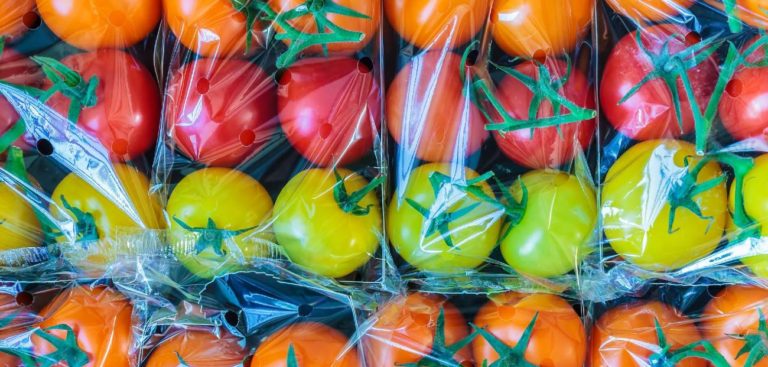Advertisements
Recycling is much more than simply separating waste. It involves a structured and standardized process that helps transform waste into new products, contributing significantly to the preservation of the environment. And one of the most important aspects of this process is the color system used to identify the different types of recyclable materials. But, after all, do you know what each color represents and how it facilitates the recycling process?

Understanding the Colors of Recycling
The first thing you should know is that each color has a specific meaning in the world of recyclable materials. This color standard is used worldwide to facilitate the separation of materials and ensure that each type of waste is correctly sent to the recycling process. Let's take a look at how it works:
- Blue: Indicates that the collector is intended for paper. Everything made of paper, such as newspapers, magazines, and cardboard boxes, must be discarded in this collector.
- Red: Intended for plastics. Plastic packaging of all types, such as PET bottles and bags, should be disposed of here.
- Green: Represents glass. Bottles, jars and broken glass can be deposited in this type of collector.
- Yellow: Refers to metals. Aluminum cans, for example, should be deposited in the yellow collector.
- Black: This collector is intended for wood. Although less common, wood waste can be recycled, and this color makes it easier to identify.
- Orange: Used for hazardous waste. Batteries, batteries, and other materials that may pose a risk to health and the environment must be disposed of in this type of collector.
- White: Intended for health service waste, such as syringes and hospital materials.
- Purple: It represents radioactive waste. Although less common in our daily lives, it is an important color in industrial and hospital environments.
- Brown: Used for organic waste. Food scraps and leaves can be disposed of in this collector for composting.
- Gray: Indicates non-recyclable general waste, or waste that is mixed or contaminated and cannot be recycled.
The Importance of the Color System
You may be wondering: why so many colors? The answer is simple: using this system makes recycling easier and more efficient, helping to ensure that each material is treated correctly. Correctly separating waste not only increases the efficiency of the process, but also helps to reduce environmental impact. And while it may seem a little confusing at first, following these color rules becomes second nature over time.
How the Color System Makes Everything Easier
Imagine the chaos if all types of materials were mixed together? Sorting by hand would be an almost impossible and extremely inefficient task. By following the color-coded system, sorting recyclable materials becomes faster and less costly. This is vital to the success of recycling, which depends on efficiency at all stages, from collection to reintroduction of recycled material into the market.
Symbology and Identification of Recyclable Materials
In addition to colors, recycling also uses specific symbols to identify the type of material in a package or product. These symbols are universal and can be found on most products we use on a daily basis. For example, aluminum packaging has its own symbol, different from glass or plastic. This also helps guide correct disposal, ensuring that the material goes through the appropriate recycling process.
Plastic Recycling and Its Colors
Plastics, in turn, have their own categorization within the recycling system. They are divided into seven types, each identified by a numerical code and requiring specific recycling processes. Let's learn a little more about each one:
- PET (Polyethylene Terephthalate): Very common in soda bottles and oil packaging, PET is widely recycled and reused in new products.
- HDPE (High Density Polyethylene): Used in crates, buckets and drums, this plastic is very resistant.
- PVC (Polyvinyl Chloride): Found in pipes, connections and mineral water bottles, PVC is a versatile material, but it requires special care when recycling due to the chlorine in its composition.
- LDPE (Low Density Polyethylene): Used in rice and bean bags, this plastic is more flexible and has a simpler recycling process.
- PP (Polypropylene): Very common in packaging for pasta, biscuits and margarine tubs, PP is also used in household items.
- PS (Polystyrene): Found in household appliances and disposable cups, PS is a material that can be recycled into lower-value products.
- Others: This category includes plastics that do not fit into the previous categories, such as Styrofoam.
Recycling and Sustainability
Following the color-coded recycling system is a fundamental step towards contributing to sustainability and environmental preservation. Each correctly separated and recycled item is a natural resource that we no longer exploit, in addition to reducing the amount of waste that ends up in landfills. Recycling awareness and practice are essential for a greener and healthier future.
Making Recycling a Habit
Now that you understand the importance of colors in recycling, how about starting to practice them in your daily life? It's not just a matter of organization, but also of contributing to a more sustainable and healthy planet. By adopting these practices, you will be doing your part to ensure that natural resources are preserved and that less waste ends up in landfills. Recycling is a collaborative process, and every gesture counts!
By following these simple tips and incorporating recycling into your routine, you’ll not only be helping the environment, but you’ll also be inspiring others to do the same. So next time you see a recycling bin, remember the colors and do your part!
Check out other interesting facts about recycling clicking here.
Learn how to make art by recycling, Click here.




This recyclable knowledge material is great, thanks a lot. Thanks for answering some of my questions.
Wonderful! It has everything I needed. Thank you!!!
Hello, I would like to know some information. Could I stylize a recycling symbol?
The recycling symbol has no “owner”. In principle, you can do whatever you want with it, and the internet is full of stylizations. Just try not to distort the original information. You can find more information here: http://setorreciclagem.com.br/3rs/qual-a-importancia-da-reciclagem
Thank you. I really learned a lot.
wow this helped me a lot for my science fair
Thanks, I needed it for a homework assignment